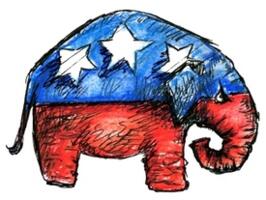Health Care Law Is Still Fighting For Its Life
A Commentary By Scott Rasmussen
Having survived the Supreme Court and the November elections, President Obama's health care law now faces an even bigger hurdle: the reality of making it work.
Implementation of any massive new program requires cooperation, something the health care law can't count on. Overall, just 46 percent of voters nationwide have a favorable opinion of the law, while 49 percent offer a negative view. The reasons are pretty much the same as they've been all along. Just 22 percent believe the law will reduce the cost of health care. Forty-eight percent believe costs will go up. By similar margins, voters expect the law to hurt the quality of care and drive up the federal budget deficit.
Overall, just 28 percent believe the health care system will get better over the coming years, while 50 percent expect the opposite. Most Democrats believe things will get better, but few Republicans or unaffiliated voters agree.
This skepticism might not matter except for the fact that the law counts on the cooperation of states to implement the federal plan. States were called upon to set up so-called health insurance exchanges that the president envisioned as a one-stop shopping place for health insurance products. However, the Dec. 14 deadline for states to sign up showed that fewer than half the states are willing to go along.
The federal government will have to run the exchanges in those states, a task few believe it is prepared to handle. The timetable is challenging, to say the least. These exchanges must be ready to accept patients by Oct. 1, 2013, and be fully operational by Jan. 1, 2014. If that's not enough, the federal exchanges will need to rely on cooperation from state agencies in places that have officially refused to cooperate.
If the president's health care law were popular, this kind of state-by-state resistance would provoke outrage and be dangerous to the politicians involved. But it has not. Only a third of voters nationwide even know whether their state has decided to open an exchange.
Fewer than half (46 percent) of the nation's voters want their state to set up an exchange, and voters are evenly divided between whether they want their governor to support or oppose implementation. Generally speaking, Democrats want their governors to be supportive; Republicans want their governors to resist; and unaffiliated voters are divided.
Last March, I wrote that the health care law was doomed regardless of what the Supreme Court decided. That still appears to be the case. With the re-election of the president and a Democratic Senate, formal repeal is not going to happen. However, the realities of implementation will provide many avenues for ongoing resistance. Some will be financial, as businesses and others evaluate their options. Some will be legal, as a number of cases continue to work their way through the courts.
But the biggest challenge is more basic. Voters want more control over their own health care choices than either the status quo or the president's law allows. Voters are OK with the requirement in Obama's plan forcing insurance companies to offer comprehensive coverage, but 74 percent think everyone should also have the right to choose between expensive plans that cover just about every imaginable medical procedure and lower-cost plans that cover a smaller number of procedures.
Giving consumers that kind of choice would be a popular reform. Giving them that kind of control over insurance companies would do more to reign in the cost of medical care than anything else.
COPYRIGHT 2012 SCOTT RASMUSSEN
DISTRIBUTED BY CREATORS.COM
See Other Political Commentaries.
See Other Commentaries by Scott Rasmussen.
Rasmussen Reports is a media company specializing in the collection, publication and distribution of public opinion information.
We conduct public opinion polls on a variety of topics to inform our audience on events in the news and other topics of interest. To ensure editorial control and independence, we pay for the polls ourselves and generate revenue through the sale of subscriptions, sponsorships, and advertising. Nightly polling on politics, business and lifestyle topics provides the content to update the Rasmussen Reports web site many times each day. If it's in the news, it's in our polls. Additionally, the data drives a daily update newsletter and various media outlets across the country.
Some information, including the Rasmussen Reports daily Presidential Tracking Poll and commentaries are available for free to the general public. Subscriptions are available for $4.95 a month or 34.95 a year that provide subscribers with exclusive access to more than 20 stories per week on upcoming elections, consumer confidence, and issues that affect us all. For those who are really into the numbers, Platinum Members can review demographic crosstabs and a full history of our data.
To learn more about our methodology, click here.





